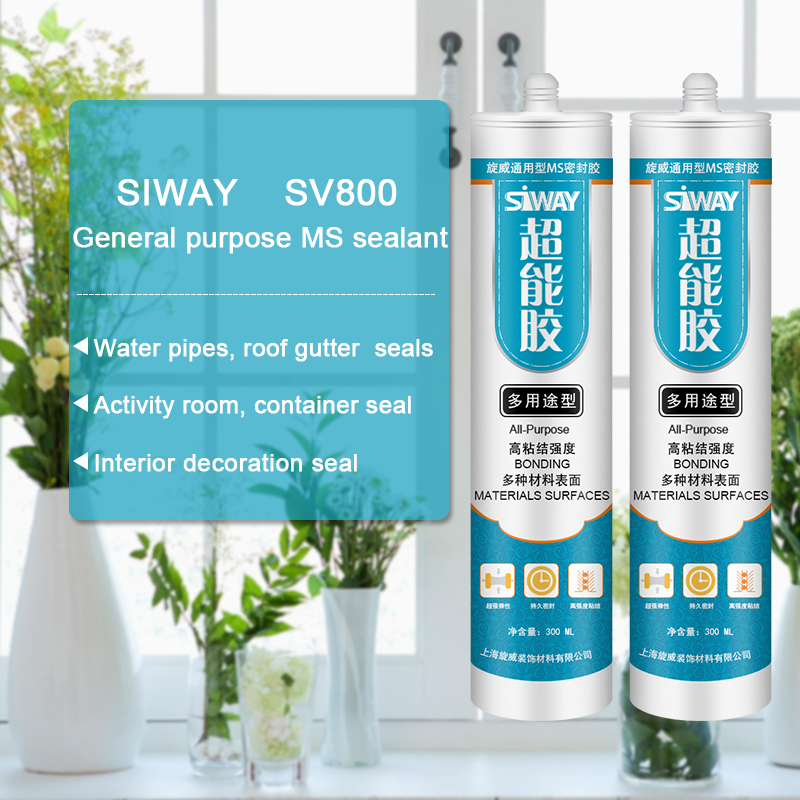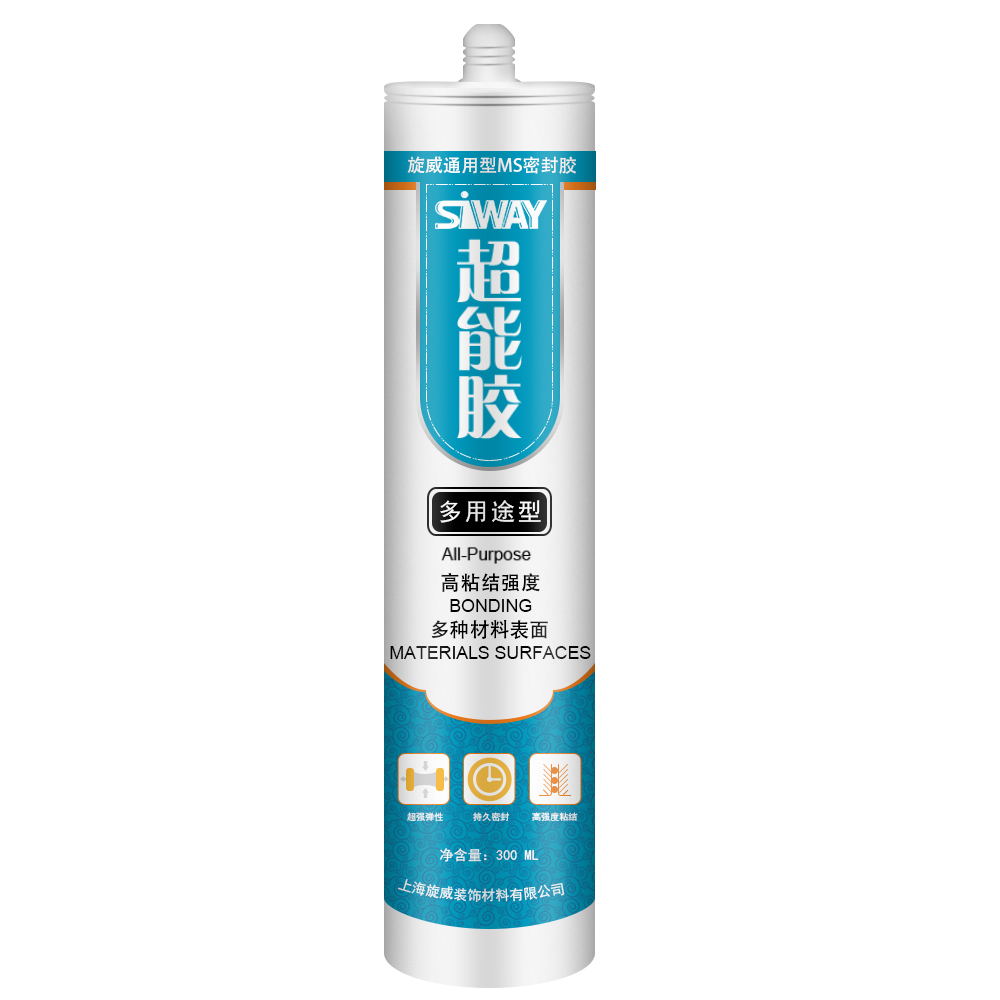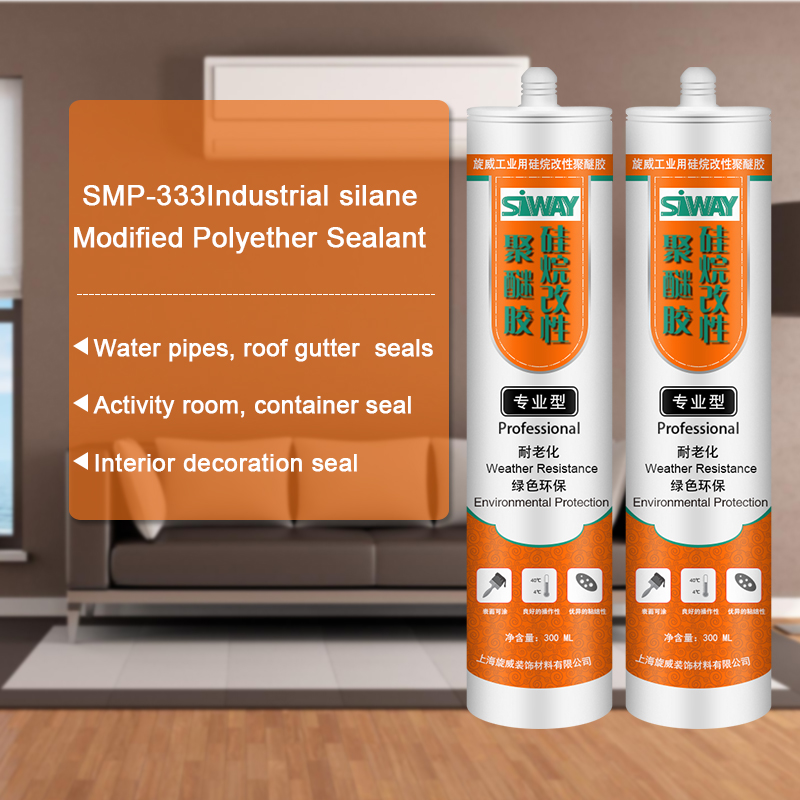Super Purchasing for SV-800 General purpose MS sealant for Turkmenistan Manufacturers
Short Description:
Description General purpose and low modulus MSALL sealant is a high quality, single component, paintable, anti-polluting neutral modified sealant based on silane-modified polyether polymers. The product does not contain solvents, no pollution to the environment, while most of the building materials, without primer, can produce superior adhesion. Product Features 〔1〕 environmental protection products: no solvent, no PVC, no isocyanate, non-toxic, tasteless, non-polluting, fast curing;...
We are proud of the high customer satisfaction and wide acceptance due to our persistent pursuit of high quality both on product and service for Super Purchasing for SV-800 General purpose MS sealant for Turkmenistan Manufacturers, items won certifications with the regional and international primary authorities .For far more detailed information,please contact us!
Description
General purpose and low modulus MSALL sealant is a high quality, single component, paintable, anti-polluting neutral modified sealant based on silane-modified polyether polymers. The product does not contain solvents, no pollution to the environment, while most of the building materials, without primer, can produce superior adhesion.
Product Features
〔1〕 environmental protection products: no solvent, no PVC, no isocyanate, non-toxic, tasteless, non-polluting, fast curing;
[2] surface coating: compatible with most industrial paint, dry surface can be painted, so does not affect the curing speed;
[3] easy to use: excellent thixotropy and extrusion, for a wide temperature range.
〔4〕 good adhesion: the stone, aluminum, ceramics and cement components, and most of the building materials with excellent adhesion properties; no pollution of the porous material.
[5] excellent weather resistance, aging performance, superior tensile and compression resilience;
[6] neutral curing, stone, cement and other non-corrosive building materials, to overcome the common silicone rubber easy to contaminate the shortcomings of the substrate.
Basic use
General purpose and low modulus MSALL sealant Suitable for use:
[1] construction of housing and other areas of bonding and sealing;
[2] fixed panel, frame, window sill installation, suitable for a variety of building materials such as paint metal, glass, wood, concrete, stone, masonry and other ordinary seal;
[3] seam and ceiling seal;
[4] water pipes, roof gutter and other seals;
[5] activity room, container seal;
[6] interior decoration seal;
[7] mildew – suitable for kitchen and toilet applications;
〔8〕 the floor system of bonding, especially for housing renovation when the laying of tiles;
[9] on the porous material or smooth, moist surface has a strong adhesive force.
[10] Please note: MSALL sealant is not suitable for glass inlay use; for the prefabricated concrete displacement joint seal recommended supporting the use of Jiang special primer.
Technical data sheet
| Test standard | Test project | Unit | value |
| Before curing——25℃,50%R.H. | |||
| GB13477 | density | g/m³ | 1.40±0.05 |
| GB2793 | Non-volatile components | % | 99.5 |
| GB13477 | Flow, sagging or vertical flow | mm | 0 |
| GB13477 | surface drying time(25℃,50%R.H.) | min | 45-60 |
| Curing speed | mm/24h | 3 | |
| Sealant curing speed and operating time will have different with different temperatures and temperature, high temperature and high humidity can make sealant curing speed faster, rather low temperature and low humidity are slower.
14days after curing——25℃,50%R.H. |
|||
| GB13477 | Durometer Hardness | Shore A | 22-28 |
| GB13477 | The ultimate tensile strength | Mpa | 1.0 |
| GB13477 | elongation at break | % | 550 |
Color
White, black, grey
Package
300ml plastic cartridges
Shelf life
12 months
Note
If you want the TDS or MSDS or other details, please contact with our sales person.
What is TUBELESS TIRE? What does TUBELESS TIRE mean? TUBELESS TIRE meaning – TUBELESS TIRE definition – TUBELESS TIRE explanation.
Source: Wikipedia.org article, adapted under https://creativecommons.org/licenses/by-sa/3.0/ license.
Tubeless tires are pneumatic tires that do not require a separate inner tube.
Unlike pneumatic tires which use a separate inner tube, tubeless tires have continuous ribs molded integrally into the bead of the tire so that they are forced by the pressure of the air inside the tire to seal with the flanges of the metal rim of the wheel.
Many patents had been filed covering tubeless tires. Killen Tire applied for a patent in 1928 and was granted GB patent 329955 in the UK in 1930. The Wingfoot Corporation, a subsidiary of Goodyear Tire were granted a patent in South Africa in 1944. Due to technical problems, most of these designs only saw limited production or were abandoned.
Frank Herzegh working for BF Goodrich applied for a patent in 1946 and eventually received US patent 2587470 in 1952 in the United States. By 1955 tubeless tires became standard equipment on new cars. BF Goodrich had to defend their patent in court several times, due to the similarities of previous designs. The primary difference between the BF Goodrich design and their predecessors was the usage of butyl rubber, which was more resistant to air leakage than the natural rubber used in the other designs.
Traditional designs of pneumatic tires required a separate inner tube which could fail for a number of reasons, such as incorrect tire fit, friction between the tire wall and inner tube generating excess heat, or a puncture. Tubeless tire technology does away with the need for an inner tube thereby increasing safety. In a tubeless tire, the tire and the rim of the wheel form an airtight seal, with the valve being directly mounted on the rim. If a tubeless tire gets a small puncture, air escapes only through the hole, leading to a gentle deflation. Conversely, an inner tube could potentially burst like a balloon, leading to deflation of the tire which could result in sudden loss of control of the vehicle. However, the “bursting like a balloon” scenario is highly unlikely due to fact that the inner tube is inside of the tire and will deflate at a rate proportional to the puncture hole size.
Liquid tire sealant can be injected into tubeless tires to prevent deflation in case of small punctures, although there is controversy regarding its compatibility with direct tire pressure monitoring systems (TPMS) that employ sensors mounted inside the tire. Some manufacturers of sealants assert that their products are indeed compatible, but others warned that, e.g., the “sealant may come in contact with the sensor in a way that renders the sensor TEMPORARILY inoperable until it is properly cleaned, inspected and re-installed by a tyre care professional”. Such doubts are also reported by others. Use of such sealants may void the TPMS sensor warranty.
A tubeless bicycle tire system requires a compatible tire, an airtight rim — capable of being sealed at the valve stem, spoke holes (if they go all the way through the rim) and the tire bead seat. The main benefit of tubeless tires is the ability to use low air pressure for better traction without getting pinch flats because there is no tube to pinch between the rim and an obstacle.
UST or Universal System Tubeless is a US patent 6257676 rim designed by Mavic with hooked edges designed to seal with specially designed tires. Several companies such as Michelin and Hutchinson make tires compatible with UST rims. UST was the first tubeless system for bicycles. Other companies such as Stans Notubes Bontrager, DT Swiss, and WTB have their own similar system called Tubeless Ready.
In 2006, Shimano and Hutchinson introduced a tubeless system for road bicycles. Tubeless tires have not yet gained popular acceptance in road racing due to lack of sponsorship, the tradition of using tubular tires and the fact that, even without the innertube, the combined weight of tubeless rims and tires is more than top-of-the-line tubular tire wheelsets. Road tubeless is gaining popularity among riders for whom the benefits are worth the costs.
How N-type and P-type semiconductors are made of silicon doped with phosphorous or boron.






